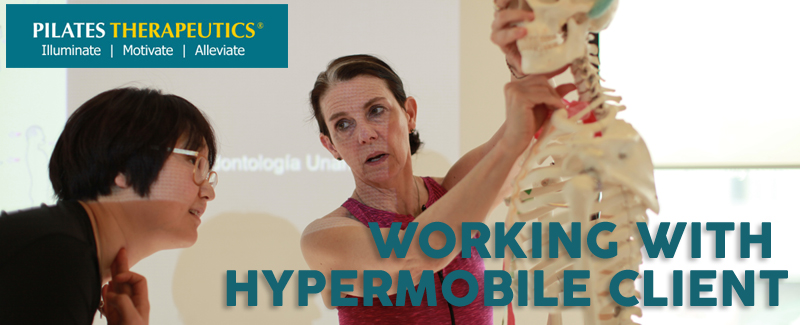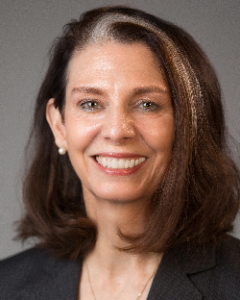
Hypermobility, What it is, What It’s Not and How to Work with It
Presented by exercise physiologist Dr. Suzanne Martin, this 3-Day course is designed to address the growing need for movement instructors, fitness instructors and allied health professionals to expand their practice potential into the care of those with the only-recently understood dysfunctions associated with hypermobility.
Working with the Hypermobile Client
A 3-Day Course Singapore 2017 (18 PMA CECs)
Hypermobility is a poorly understood condition, whose medical diagnosis is often missed by traditional imaging techniques, and patterns of recognition diagnosis. Hypermobility can mean a number of things. It is the wise movement educator who learns to distinguish what is considered hypermobile, and its level of severity. The hyper-mobile population includes clients who are either post-partum, have acquired their flexibility through physical training or trauma, have an autoimmune issue or have a genetically loose collagen type. In addition, their joints may be shaped differently than our general client population.
The International Community has come together through the Ehlers-Danlos Society to create new classifications in 2017. Learn not only the classifications and physiological background of hypermobility, but also assessments for the spine, elbows, knees, hands and feet to give confidence in working with your hypermobile client.
Research shows movement and organization of movement is the key component in helping to alleviate pain and control unsteady joints. Movement education in the forms of fitness, physical therapy, Pilates, yoga and other forms are well-suited to help with the dilemma of pain and dysfunction associated with populations who have hypermobility, if the educators understand the specifics of what hypermobility is. Learn how to identify the differences between various forms of hypermobility, their varying causes and what you can do to intervene within your field of movement practice. Learn quick assessment techniques to help identify this population. Learn how to identify some of the abnormalities and movement dysfunctions associated with the condition in the spine, elbows, wrists, hips, knees and ankles.
The hyper-mobile population is especially at risk for increased ligament laxity and tends to have low tone musculature. The presented evidence-based diagnostic criteria help to determine the level of laxity involvement. The overview of the spectrum of hypermobility, from pathological to benign, will be presented. The pathophysiology will be explained, as well as several cases will be highlighted.
Paradoxically these clients need proper form to stretch, organize and engage fascial connections and musculature although they are especially at risk for increased ligament laxity. Since many tend to have low muscle tone, learn how to enhance joint congruency and promote the proprioception needed for stability so that they can both enjoy, and build, true strength.
Contraindications and precautions will be addressed for this population. Course content reviews structural assessment and targets the most effective sites of concentration for optimal stabilization in order to restore optimal function and greatest discomfort relief. Manual treatments will be suggested as well as emphasis being given for the rationale for the use of compressive garments to enhance neurogenic strength. Specific exercises will be presented along with a home-exercise program.
This is an intermediate to advanced course.
Objectives: Upon completion of this course participants will be able to:
- Describe the term hypermobility.
- Describe the classifications of the spectrum of hypermobility.
- Better understand the different populations who may be affected by hypermobility and why
- Better understand the difference between acquired hypermobility and genetic hypermobility
- Describe the body’s local tissues reactions to hypermobile joints
- Better understand the difference between instability and hypermobility
- Better understand the difference between those with a disease state and those with a hypermobile condition
- Better understand the elements involved with helping those with hypermobility to exercise safely
- Describe how movement environments can help those with hypermobility
- List and identify the criteria for the revised Brighton hypermobility scale
- Describe evidence that gives information about how to help and train those with hypermobility
- Describe goals useful in working with a hypermobile population
- Learn exercise series that focus on the following body areas to promote better joint congruency and ergonomics for exercise and for daily life
- Spine
- Hips
- Knee and leg alignment
- Ankles and feet
- Elbows and wrists
- Neck
Who Should Attend? This course is intended for licensed Physical Therapists, Physical Therapy assistants, Certified Pilates Instructors, Fitness Instructors, Yoga Instructors , Nurses and Physicians
About Dr Suzanne Martin
 Dr. Suzanne Martin is an exercise physiologist, physical therapist and Pilates instructor. She is recognized as an international expert in the field of human movement and potential. A doctor of physical therapy and a gold-certified Pilates expert, she is an international presenter, speaker, coach and mentor, as well as an award-winning author and DVD producer. Dr. Martin’s aesthetic for movement started in the visual arts and dance. With over 30 years of teaching experience, she blends art and science into her writing and instruction from the fine arts, health and movement fields. Her mission is to add value to people’s lives both directly to the people she treats and to those who help with healing and performance enhancement. Her passion is to help those with chronic conditions that require lifelong learning and management such as professional and recreational performance, foot issues, spinal asymmetries, and cancer survivorship. As performing arts specialist, she is a Wellness Consultant for Smuin Ballet for over 20 years. As Founder of Pilates Therapeutics LLC, an educational organization for movement instructors and therapists, her mission is to develop leaders by in-depth training and mentorship. Annual Specialization Mentoring Programs, host site teaching, and instructional DVD’s (available for CE credit), featuring the therapeutic application of fitness, the Pilates Method and nutrition are available worldwide. For further information and to see her teaching schedule, go to www.pilatestherapeutics.com.
Dr. Suzanne Martin is an exercise physiologist, physical therapist and Pilates instructor. She is recognized as an international expert in the field of human movement and potential. A doctor of physical therapy and a gold-certified Pilates expert, she is an international presenter, speaker, coach and mentor, as well as an award-winning author and DVD producer. Dr. Martin’s aesthetic for movement started in the visual arts and dance. With over 30 years of teaching experience, she blends art and science into her writing and instruction from the fine arts, health and movement fields. Her mission is to add value to people’s lives both directly to the people she treats and to those who help with healing and performance enhancement. Her passion is to help those with chronic conditions that require lifelong learning and management such as professional and recreational performance, foot issues, spinal asymmetries, and cancer survivorship. As performing arts specialist, she is a Wellness Consultant for Smuin Ballet for over 20 years. As Founder of Pilates Therapeutics LLC, an educational organization for movement instructors and therapists, her mission is to develop leaders by in-depth training and mentorship. Annual Specialization Mentoring Programs, host site teaching, and instructional DVD’s (available for CE credit), featuring the therapeutic application of fitness, the Pilates Method and nutrition are available worldwide. For further information and to see her teaching schedule, go to www.pilatestherapeutics.com.
COURSE DETAILS
Date:
25 – 27 August 2017
Friday – Sunday
9am – 5pm
Fees:
S$1,200
Early Bird Price S$1,080 before 24 July 2017
Venue:
Royal Plaza on Scotts Hotel
25 Scotts Rd, Singapore 228220
